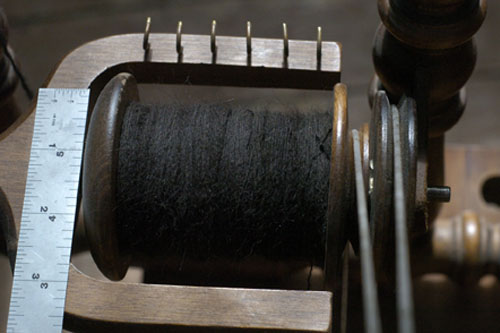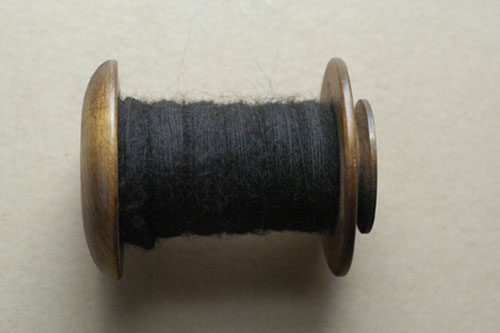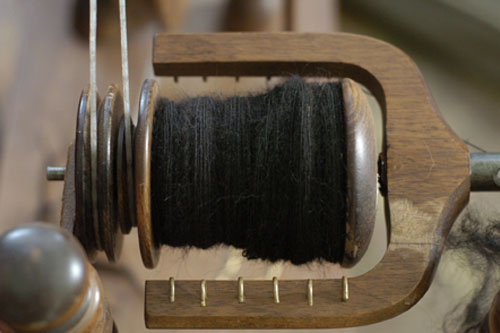Cue your dye/die puns. Over the last three weekends, I took a class on natural dyeing at A Verb for Keeping Warm.
The first class was about mordanting. Kristine uses aluminum sulfate, which is a garden additive and thus relatively safe as a mordant. Many mordants are made from heavy metals like chromium, and they can be difficult to handle and dispose of.
We did our mordant bath in this large aluminum pot. Usually aluminum is a bad choice for dyeing, because it is highly reactive -- even the aluminum in this pot has an effect on the mordant. But if the effect is what you want, then what the hey. This almost looks like one of those crazy turkey fryers, but it is actually for making fair food, which brings us right around to my theme for the summer, which is Stuff Yourself Silly With Fair Food.
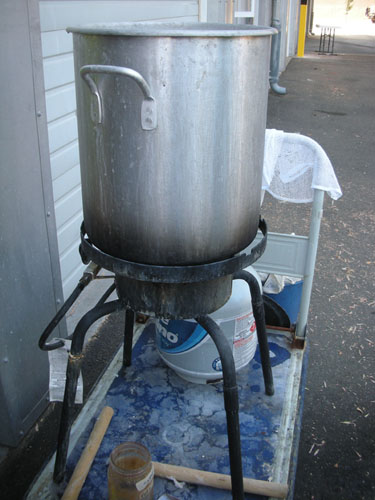
The mordant pot can be reused many times, adding more aluminum sulfate and water as you go. Eventually it gets really murky and needs dumping. If you happen to have hydrangeas, they love the stuff. So do most acid-loving plants.
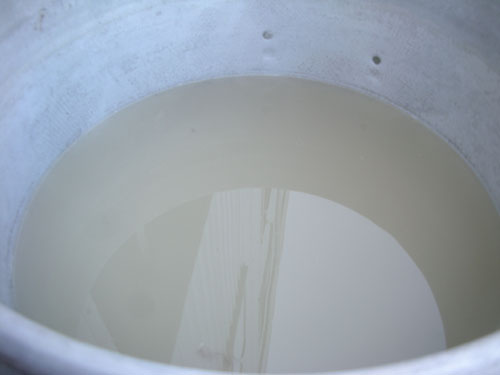
After we'd weighed out our fiber and put it in the pot to stew for an hour, we sat around and talked about dyestuffs. You can buy concentrates of many natural dyestuffs if that's what suits you -- the benefits are a certain kind of predictability that is useful when you are dyeing on a commercial scale.
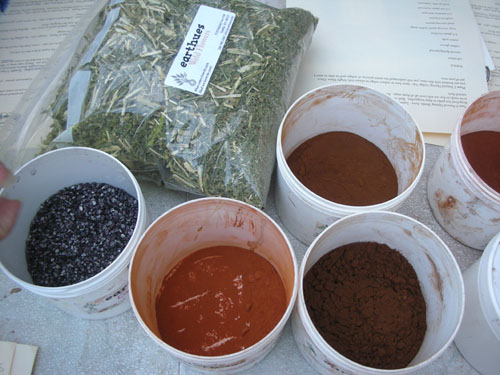
These are (dead) cochineal bugs. They live on prickly pears, and they make everything red. They are a foodsafe red dye -- any natural red colour in your food comes from these bugs. I'm thinking of giving some to a chicken as an experiment -- will the bugs turn the eggs red?
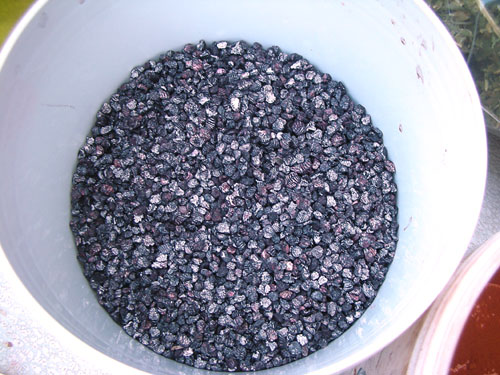
The concentrated powders are interesting to handle. This is a pot of Lac, which is where lacquer comes from. Many people have a strong allergic reaction to this, plus it smells terrible. That's why there's so much in the pot.
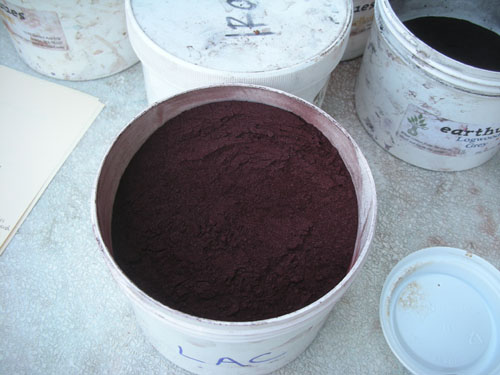
We talked quite a bit about the properties of each kind of dye, how mixing different things in changes colour, and on and on. My interest in natural dyeing is pretty academic, at least on this scale. I'd like to plant some dyestuffs and dye with my own plants, but I'm less interested in dyeing from concentrated powders produced in a plant somewhere.
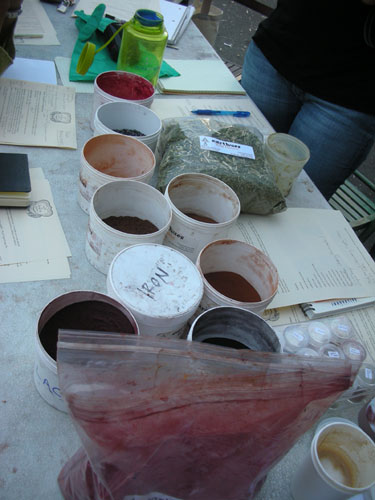
Our next class, we dyed. The fiber had been sitting, damp, soaking up mordant all week. Now we mixed up a concentrated dye solution, put the fiber in it, and then put the fiber into mason jars.
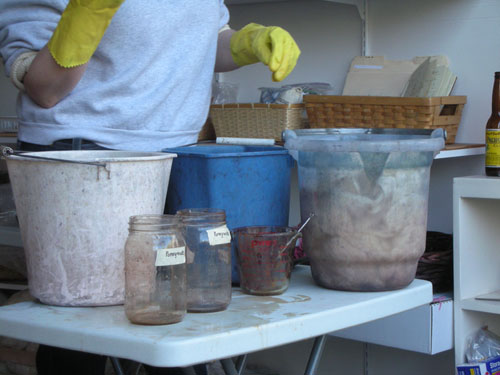
We put the fiber into a dye bath in a bucket first, to get it all soaked up with dye. Then we stuffed it into the mason jar.
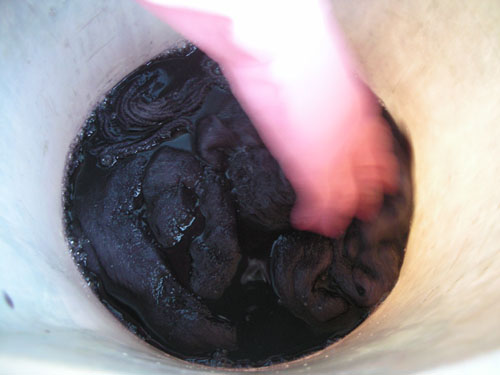
We set the caps of the mason jars on top loosely, then put them in water baths on the stove to heat up for an hour.
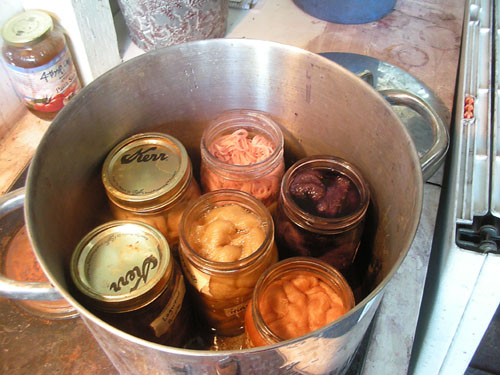
When they cooled down, they were set aside in their jars to sit for a week. You can get different effects by soaking the fiber for more or less time.
This is what greeted us this last Sunday. Twelve shimmering, jewellike mason jars full of fiber. You can see the dyes we used: pomegranate, madder, madder with cream of tartar mixed in, quebracho red, logwood grey, and logwood purple.
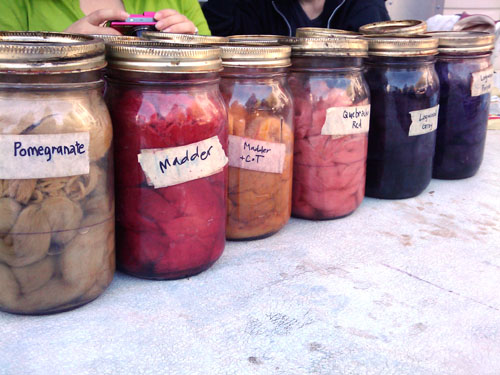
Our last class was all about washing. You can use a lot of water in washing that just gets wasted (if you don't have some kind of greywater system). So Kristine showed us how to waste less and get more out of the water we did use.
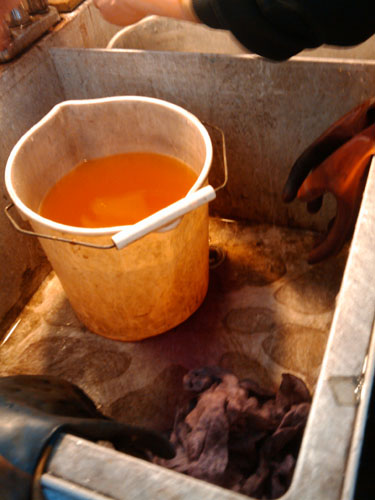
The key to not felting the fiber together is to handle the fiber as little as possible, but the key to saving water is pressing as much water out of the fiber as possible before each dunk. It's a balancing act.
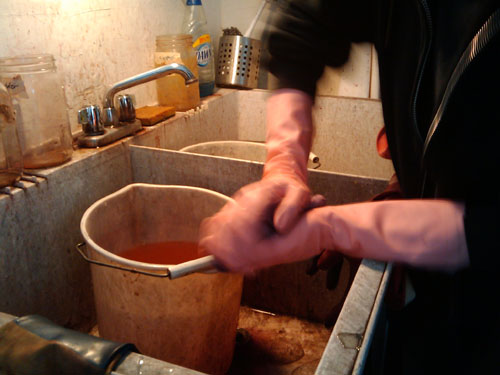
When we finished, everybody had about an ounce of each colour to take home and finish drying. I'm thinking of carding mine together to make some batts of a larger amount of fiber so I have enough to make a real project.
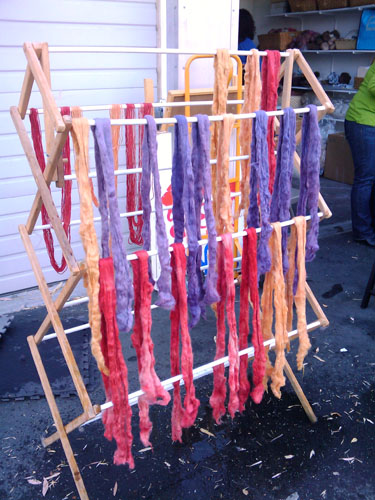
I'm looking forward to taking more classes on natural dyeing, especially a dyer's garden class they're still working on developing.
